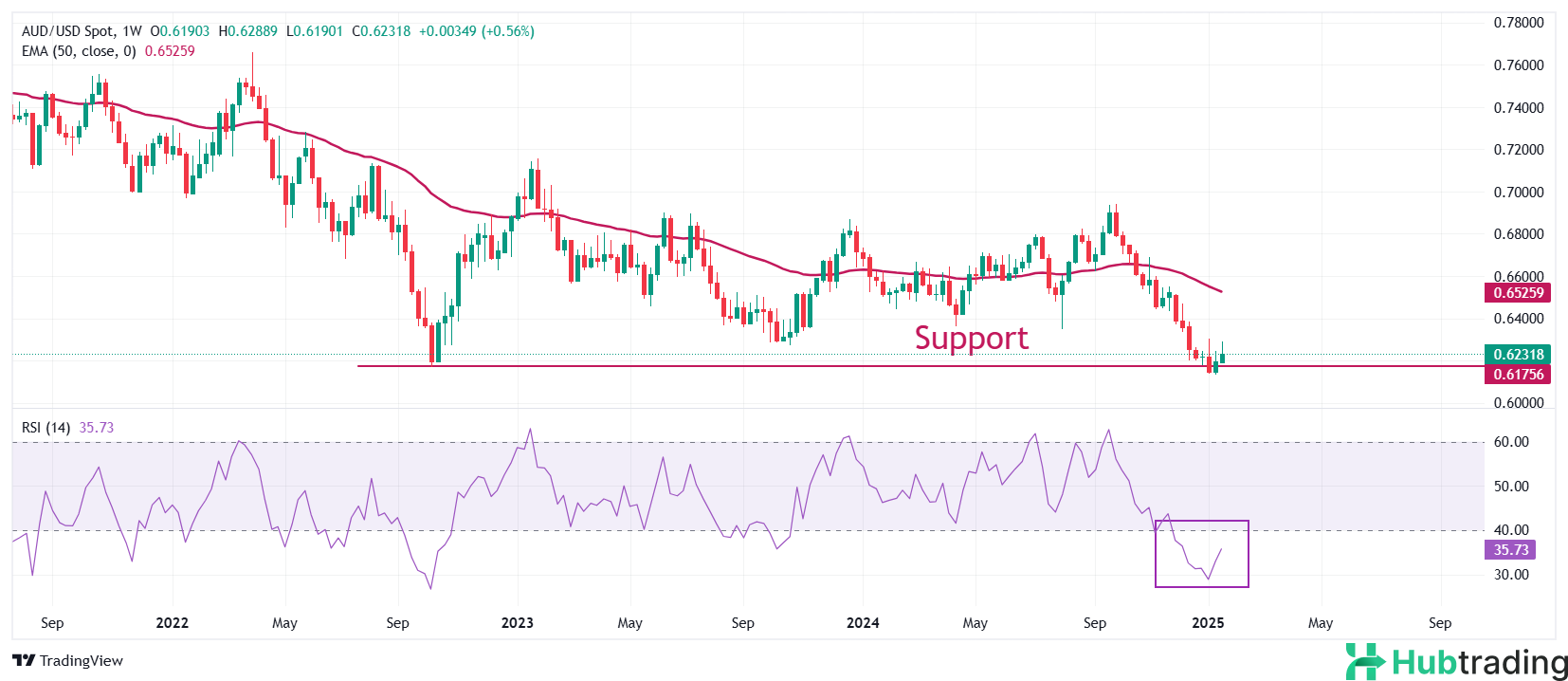- AUD/USD drops to around 0.6220 following Trump’s renewed tariff threats against China.
- The Reserve Bank of Australia (RBA) is anticipated to begin cutting interest rates in February.
- The US Dollar rebounds strongly as Trump reaffirms that the tariff plan remains on course.
The AUD/USD pair fell sharply to near 0.6220 during Tuesday’s North American session after failing twice to break the key resistance at 0.6300. The pair weakened further as U.S. President Donald Trump reignited fears of tariff hikes on China, a move that could indirectly impact Australia’s export sector given its strong trade ties with China. Trump’s presidential memo directed federal agencies to reassess trade relationships with China and North American economies.
Meanwhile, expectations of policy easing by the Reserve Bank of Australia (RBA) in February have grown. This follows the RBA’s December meeting, where officials expressed confidence that inflation was sustainably moving toward the target, fueling dovish bets.
The U.S. Dollar rebounded strongly, recovering most of Monday’s losses, as Trump confirmed that his tariff plan remains on track. The U.S. Dollar Index (DXY), which measures the Greenback against six major currencies, bounced back from an almost two-week low of 108.00.
Technical Analysis:
AUD/USD found buying interest near a four-year low of 0.6170 but remains in a bearish trend. The 50-week Exponential Moving Average (EMA) near 0.6526 continues to slope downward, signaling sustained selling pressure.
The 14-week Relative Strength Index (RSI) has bounced back after approaching the oversold territory near 30.00. However, the bearish momentum remains intact as long as the RSI stays within the 20.00–40.00 range.
- Downside Levels: Failure to hold the January 13 low of 0.6131 could push the pair further down to the psychological support at 0.6100 and the April 2020 low of 0.5990.
- Upside Levels: A decisive break above the January 6 high of 0.6302 could pave the way toward the December 18 high of 0.6340 and the key resistance at 0.6400.
The AUD/USD pair’s outlook remains bearish, with near-term movements dictated by developments in U.S.-China trade relations and RBA policy expectations.
AUD/USD weekly chart






